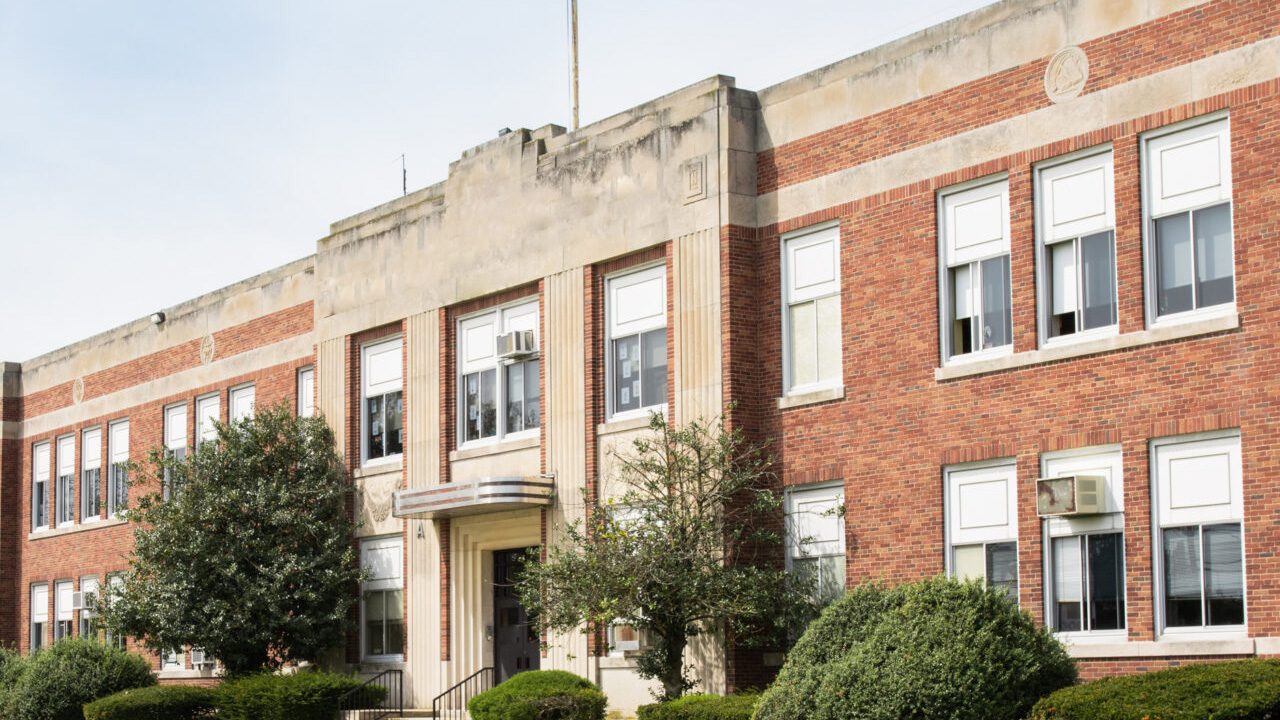
Districts are closing traditional public schools as charters, etc., lure students
Florida Phoenix | By Jay Waagmeester | June 25, 2024
It’s a result of deliberate DeSantis administration policy
Broward County Public Schools has voted to close a minimum of five of its campuses amid declining enrollment, a trend in counties across Florida amid increasing taxpayer-funded enrollment in private and charter schools.
The board on June 18 told Superintendent Howard Hepburn to begin the closure process in light of an internal report finding that 66 of Broward’s more than 200 traditional public schools were operating at 70% or less capacity.
Board member Jeff Holness called for a “complete plan” as opposed to what the official initially called a “closed plan” — the latter focused on closing rather than on a future of growth.
“How will be we competitive? Because otherwise we are going to still continue to close schools, to repurpose schools, because we are losing students,” Holness explained.
Other board members echoed the need to bolster the remaining schools. Board member Nora Rupert advocated for schools to advertise their programs and plans for improvement to attract in-district families who have used the choice option to attend alternatives like charter schools.
Charter schools are considered public schools, although they are not subject to as much government overrsight but rather are subject to rules put in place by their governing boards.
The Broward board instructed Hepburn to “take action district-wide to expand programmatic options at our schools, to recommend the closure of a minimum of five schools and develop a plan to attract students back to our schools for the 2025-26 school year and approve the recommended timeline.”
The board will decide during a special meeting in November which schools are “optimal for closure” based on school grade, historical significance, facility conditions, and percentage of students in their neighborhoods attending charter schools.
Such developments in Broward and elsewhere are in keeping with the DeSantis administration’s policy of giving parents control over their children’s educations — and the state’s top education official is asking traditional public schools to do better, even those serving disadvantaged communities, while facing decreasing budgets.
‘That’s how this works’

Florida Education Commissioner Manny Diaz Jr. has argued that administrators contemplating closing schools because of the drain from Florida’s expanded voucher programs should innovate to make themselves more attractive to parents.
“You’ve seen these reports of some districts having to close schools; well, that’s how this works,” Diaz said during a May 29 Board of Education meeting.
Two of the three districts discussed in a Politico report published three days before Diaz’s remarks, Broward and Miami-Dade, have voted to close schools, and the third is collecting feedback on the best route forward. Similar closures are possible in other districts.
“Districts have to make decisions, and sometimes these districts in the past have made decisions that have kicked the can down the road and now have to make harder decisions,” Diaz said. “But what they need to do is continue to innovate and provide programming that is attractive to parents, so that in that open competition they have the best option for those parents to choose.”
In a previous presentation to the board about Broward’s “redefining our schools” initiative, Hepburn included a goal to “Be the ‘Choice’ for Students and Families” while exhibiting fiscal responsibility.
A survey of more than 2,000 charter and private school parents in Broward County found that factors influencing decisions to switch to a traditional public school include “enhanced academic programs, increased extracurricular opportunities, improved safety measures, better transportation services, and greater options for parent involvement.”
At Oakridge Elementary School, one of the three campuses once proposed for closure in Broward, 36.1% of public-school students in its boundary attended charter schools during 2023-24, not including those attending private schools.
At Olsen Middle School, another campus possibly targeted for closure, 45.1% of public students within its neighborhood attended charter schools during 2023-24. Those boundaries are in part made up of a Census tract in which more than 50% of students in grades 5 through 8 attended private schools during 2022.
Fewer students
Between the 2012-13 school year and the 2022-23 school year, 3.59% of enrolled students within Broward shifted from public to private education (not including charters), compared to the 2.76% statewide rate. Broward’s traditional public schools’ share of total enrollment was 87.39% in 2012-13 before dropping to 83.8% in 2022-23.
The shift during that decade equates to 5,494 fewer public-school students and 11,768 more noncharter private-school students in the county. The overall student population increased by 6,274.
There are 300 public schools in Broward County, 87 of them charter schools. There are 309 private schools in the county, not including charters, according to a board report.
Other counties facing closures
Up the coast in Duval County, outside consultants to the school board proposed closing 30 of its 197 schools to help address a projected $1.4 billion deficit — reflecting $2.51 billion in resources against $3.91 billion in costs.
The plan looks to “right size” schools in the Duval district, where 24% of available seats for students sat vacant during the 2022-23 academic year and 85% of the 152 schools were below “seat utilization” in 2023-24, a number that encompasses enrollment and capacity.
The Duval district has lost 0.14% of its share of total students to private schools since 2012-13.
According to Duval district documents, the “choice option” to go to charter or private schools is used by more than half of middle and high school students.
Students who choose to enroll in non-traditional public schools take their state per-pupil allocation with them. The declining enrollment creates bigger gaps between classroom expenses and state allocations for every student that takes their allocation elsewhere.
According to a Senate fiscal impact report, 374,960 students received vouchers in 2023-24, up from 255,361 from the year before. Vouchers for tuition vary for different schools and students but typically range around $8,000 per student.
Local options
The Duval district hosted seven forums to address enrollment and budget changes since the growth of charter and private school enrollment, preceded by a panel discussion of school closures and the role of public education in the county. The district has hired a new superintendent since the proposed closures were announced, and advocacy groups in opposition to closures have formed.
Duval and Broward are not alone. For example, Hillsborough County Public Schools closed five schools in May; a Leon County school board member prompted discussions about closing schools amid declining enrollment during an April meeting; and Martin County recently started offering controlled enrollment, whereby students can switch from their assigned campuses to other traditional public schools within the district with spare capacity to balance enrollment.
Miami-Dade Public Schools voted June 18 to repurpose campuses and establish new neighborhood boundaries for schools, including two historically serving Black and immigrant communities.
Antonio White, first vice president of United Teachers of Dade, said during a news conference before the board meeting that the “powers that be in Tallahassee” are penalizing public sector unions.
“Tallahassee politicians need to fully fund our schools so that students in these communities have the resources they need without having to be bused to other locations,” White said.
“Schools do not need to be closed or be repurposed for Dade County Public Schools to become more efficient. Local neighborhood schools can remain open and still be more efficient if the district makes small changes in how they operate these schools. This is a concerted effort, and we intend to stand to fight against that,” he added.
The Miami-Dade school board opted to convert two campuses from traditional public schools to “exceptional student education facilities” serving children with disabilities or special needs — Shadowlawn and Parkview elementary schools — and transform the Myrtle Grove school from a K-8 school to an elementary school.
Daniella Pierre, Miami-Dade NAACP branch president, called for equal access to education across the district. In Broward, too, came warnings of harm to marginalized communities from closure of public schools, which can serve as community centers and focuses of neighborhood identity.
“We are Shadowlawn; we are Parkview; we are the schools of this community,” Pierre said, referring to minority residents.
“And we call for the full funding of public education in our schools. We’re calling on everyone else to join in with us. We understand and know since the beginning of time, as we recognize the seventh anniversary of Brown v. Board, we are continuing the same fight for education,” Pierre said.
Driving the shift in enrollment
Florida’s school choice program previously limited eligibility based on income, but now offers universal school choice, which increases greatly the number of students eligible to receive vouchers. That massive voucher expansion in 2023 could mean a more drastic drop in traditional public-school enrollment in the years to come.
School vouchers apply state funding to cover, or assist in covering, education of students if their parents choose to send them to a nontraditional public school, including charter or home schools.
The number of home-schooled children has more than doubled since 2012-13, when 75,801 students were home schooled compared to 154,289 during 2022-23. The number of children attending private schools in 2013-14 was 325,502 and rose to 445,067 in 2022-23.

Ben Gibson, chair of the State Board of Education, agreed with Diaz that disruption in education “in many ways can be a good thing, because it’s forcing everyone to rethink about how we are delivering education.”
“I think sometimes there’s a narrative that somehow we’re abandoning public education or that we’re not prioritizing it, and I think really the way to think about it is we’re prioritizing all forms of education, and certainly public education is a major, the primary, part of that,” Gibson said during the recent state board meeting.
Diaz insists it is not the job of the state to choose where students enroll, but to provide options. “And we are doing that,” he said.
Andrew Spar, president of the Florida Education Association, warned that students in districts that may close schools could face longer commutes to the traditional public schools that remain open.

“That’s what we’re seeing happen in Florida, and the commissioner is celebrating that because that’s their intent,” Spar said during a news conference following the board meeting.
“[The Department of Education doesn’t] want strong public schools in every community. They want to use those taxpayer dollars to pad the bottom lines of their corporate interests, those that are in the business of making money off of education, not those who are actually trying to educate every child.”
The FEA pointed to a WLRN series about elected officials and their ties to charter schools and the nonprofit Step Up For Students, which reported $208 million more revenue than expenses in 2021.
Diaz, a former state legislator, was chief operating officer at Doral College for nearly 10 years before becoming education commissioner. Doral, a private college, creates programs for charter schools and is affiliated with for-profit charter school network Academica, which oversees more than 200 charter schools.
As a member of the Florida Senate, Diaz sponsored various education bills, including 2021 legislation that created school choice opportunities for some Florida students and 2017 legislation that brought accusations of a conflict of interest that provided $140 million to charter schools.





